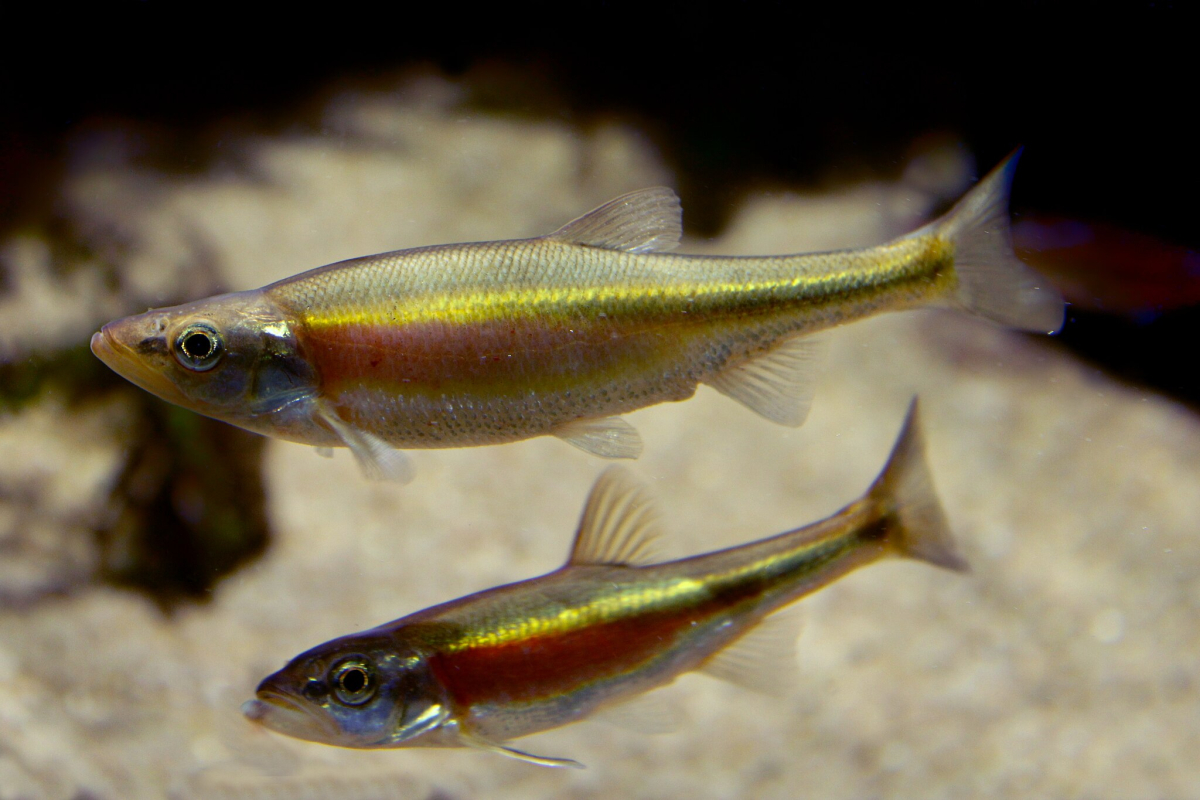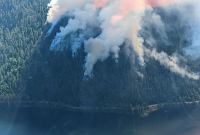Support strong Canadian climate journalism for 2025
A small but important freshwater fish threatened by urban sprawl is finally getting federal protection after 15 years of delays.
The release of the finalized protection strategy for the endangered redside dace averted an impending court battle; environmental groups including Ecojustice were close to taking the federal government to court for missing legal deadlines to list the species as endangered.
After the strategy came out, Ecojustice and Environmental Defence dropped their request for a judicial review.
As far back as 2007, federal scientists identified the redside dace as endangered and 15 years later, “this species finally has the protection it's owed on that scientific basis,” said Ecojustice lawyer Reid Gomme in an interview with Canada’s National Observer. The case of this little fish shows that sometimes a “legal push” is needed to overcome chronic delays in getting federal species protections in place, he added.
Redside dace are small minnows that live primarily in the Great Lakes region and play an important role keeping insect populations — including mosquitoes — under control. Urban development is the greatest threat to these tiny fish, which measure no more than 12 centimetres in length.
The colourful minnow “really tells you a lot about the overall health of the watershed” and “the species itself is quite rare,” said Tim Gray, executive director of Environmental Defence in an interview with Canada’s National Observer.
The fish is found in the northeastern U.S., and the Canadian population is mainly in the Greater Toronto Area. But that habitat is increasingly threatened.
“About 80 per cent of its remaining habitat, mainly in and around the Greater Toronto Area, is either already scheduled or has been scheduled for urban development,” Gomme said.
In a 2020 report on species at risk, Ontario found the redside dace population appeared to have declined by over 50 per cent in the last decade and noted it has a “small, declining range that is severely fragmented.”
Highways — such as Ontario’s proposed Highway 413 — open the door to more urban sprawl and development in the wetland, tributaries, rivers and streams that make up its critical habitat.
If Highway 413 is built, it would cut through 2,000 acres of farmland, cross 85 waterways, pave nearly 400 acres of protected Greenbelt land, disrupt 220 wetlands and impact the habitats of 10 species at risk, including redside dace.
Earlier this year, the federal government cancelled its environmental assessment of Highway 413 after a ruling by the Supreme Court of Canada found that Ottawa's Impact Assessment Act, which regulates major development projects, is largely unconstitutional because it stepped into areas under provincial jurisdiction.
Environmental groups criticized the federal government for that decision, but the redside dace protections will be an important factor with Highway 413, Gray said.
Now that the redside dace recovery strategy is finalized, the federal government has 180 days to put a protection order in place.
“Once that's in place, there's a prohibition on any harm to the critical habitat of that species, unless, as a proponent, you have a permit to do so,” Gomme said.
These protections under the Species at Risk Act say “you're not going to get a permit unless you can show that the project you're working on, that you're proposing, is not going to jeopardize the survival and recovery of the species — and that there aren't any alternatives to what's been proposed that would be better for the recovery and survival of the species,” Gomme explained.
“Basically, it puts a big check and balance on proponents who might have just looked to bulldoze a certain place without regard for this species and its critical habitat,” he said.
In Gray’s view, this provides enhanced protection for these little fish (and other species with impacted habitat) because “it's really hard to see how those permits could be issued with the current configuration of the highway.”
The Species At Risk permit requirements likely means the highway can’t go ahead as planned, Gray said.
Environmental Defence was Ecojustice’s client mounting the legal challenge
“I think it's great news that the federal government decided to go ahead and finalize the strategy, rather than go to court and fight us on it,” Gray said. Both Gray and Gomme note that the federal government doesn’t have to wait until January to issue the protection order; it can do so sooner, and in their view, it should.
“I'm hoping that they take it seriously and they get it done, and obviously we'll be around to enforce the law if that isn't the case,” Gray said.
“The Ontario government has dramatically rolled back protection for species under Ontario legislation, so the fact that we now have a federal recovery strategy which mandates critical habitat protection is more important than ever because of the absence of protection from the provincial government.”
In an emailed statement to Canada’s National Observer, the Department of Fisheries and Oceans said it hasn’t received detailed plans of the Highway 413 project and therefore, “specific anticipated impacts on the Redside Dace and its habitat remain unknown at this time.”
The department “will assess the project’s potential impacts once detailed information is available. Any activity affecting Redside Dace’s critical habitat must comply with SARA and the Fisheries Act to ensure it does not jeopardize the species' survival or recovery.”
— With files from Abdul Matin Sarfraz
Natasha Bulowski / Local Journalism Initiative / Canada’s National Observer
This article was updated to add comment received after deadline from the Department of Fisheries and Oceans






Comments
If land has an active Conservation Easement with a Land Trust it is also federally protected through the Department of Natural Resources.
Let's get more of these happening in the Greenbelt to make development more responsible.